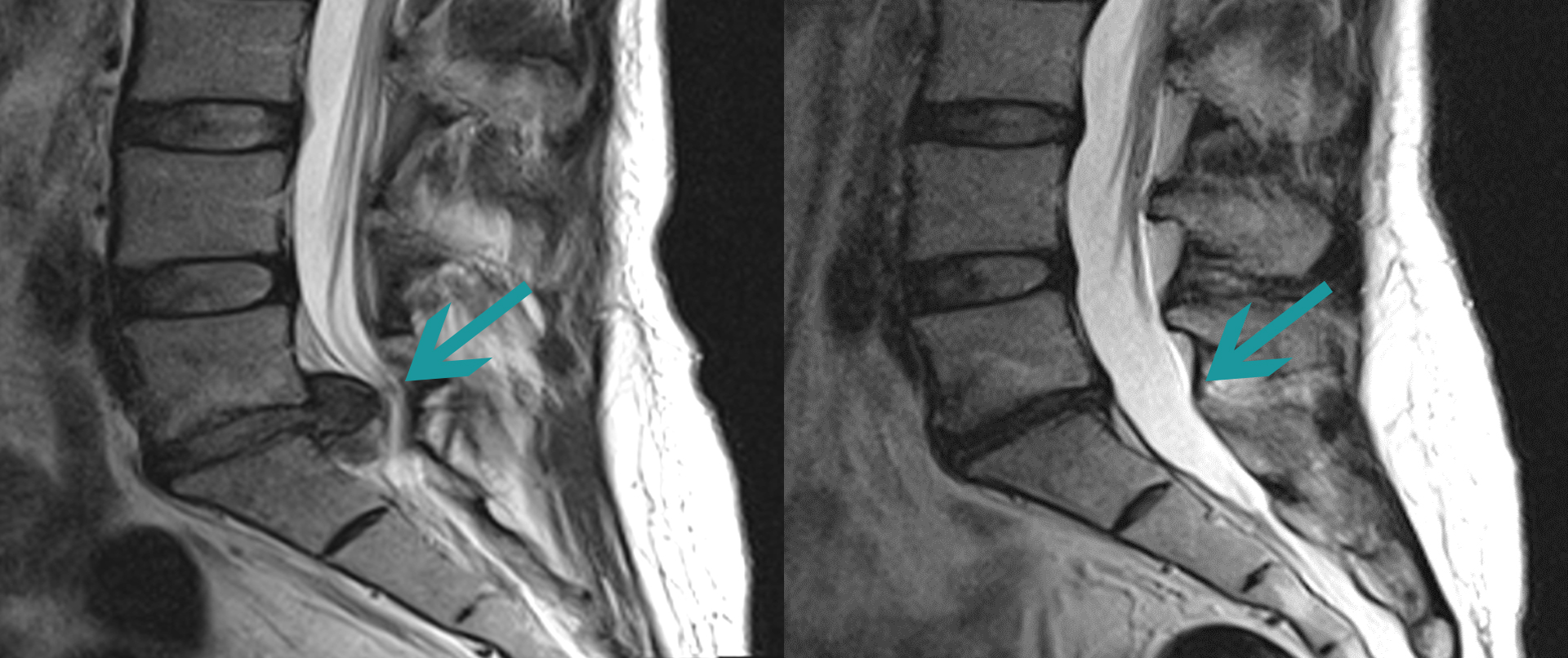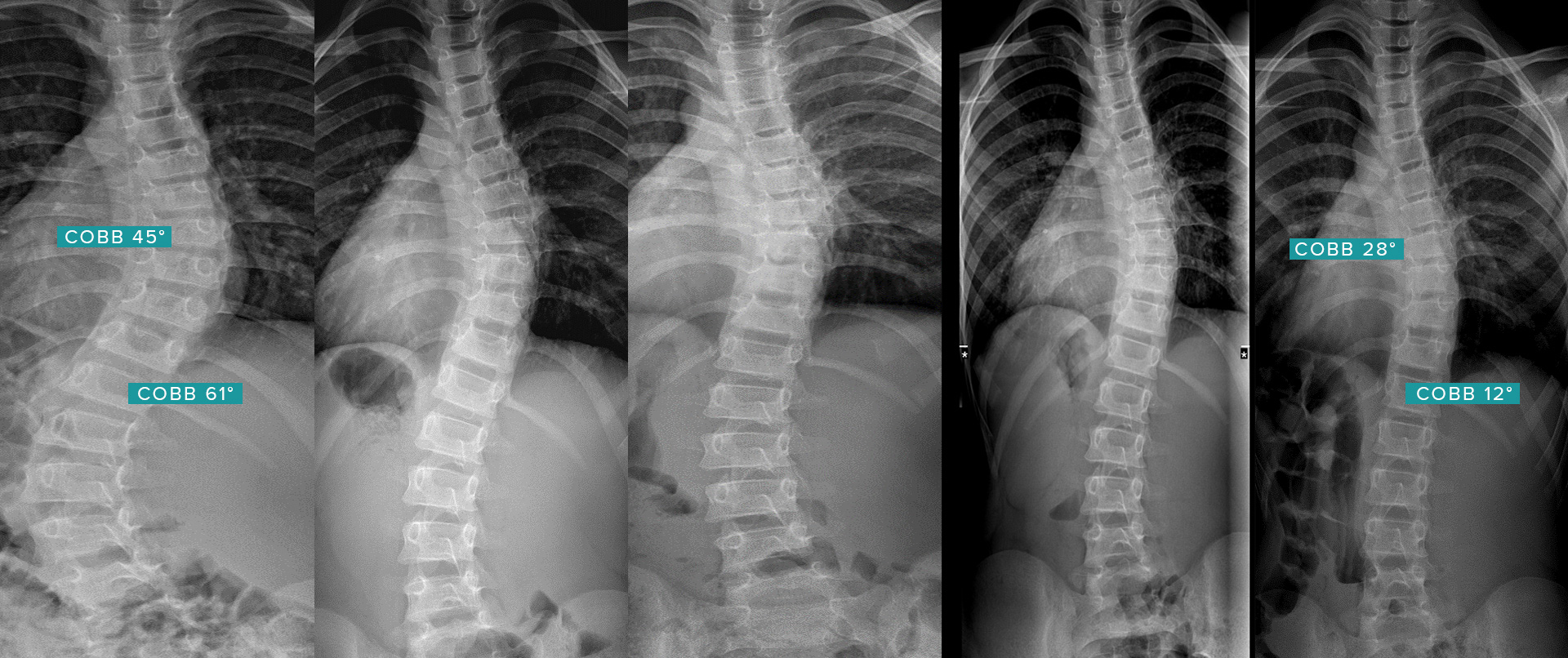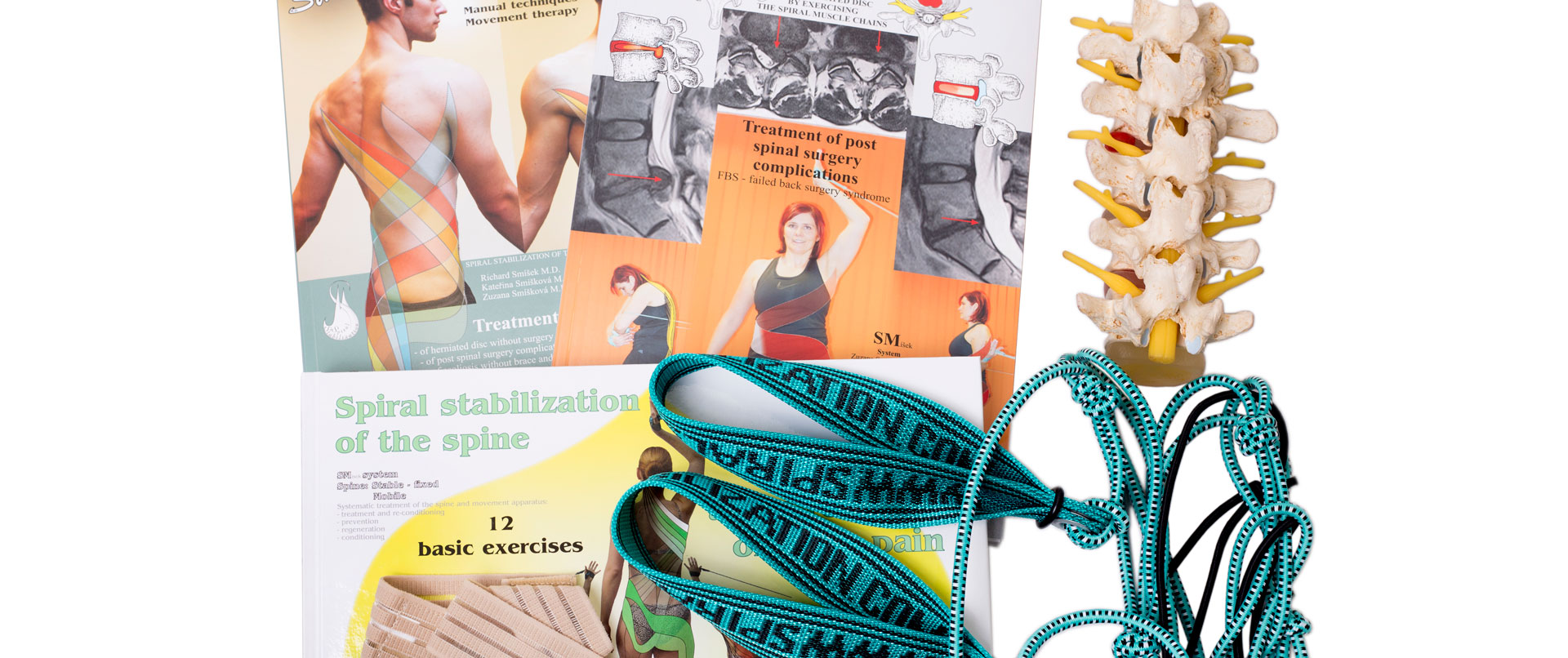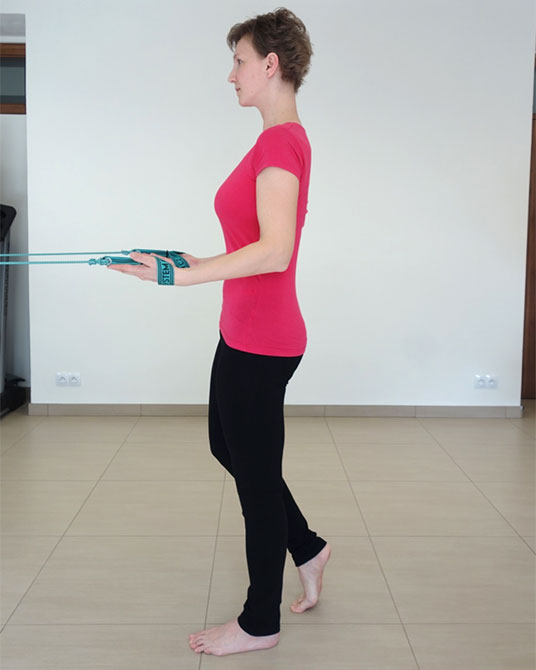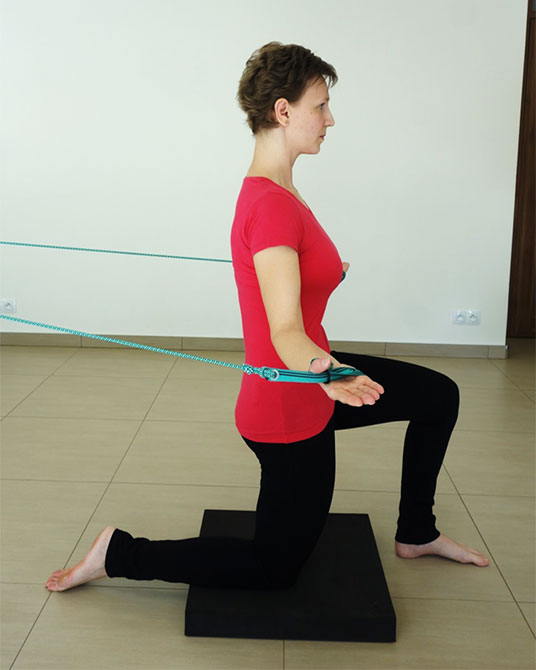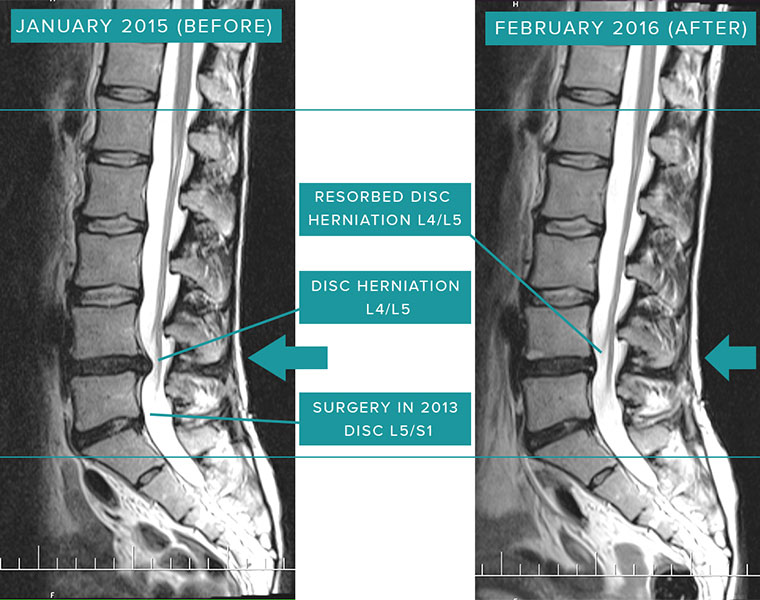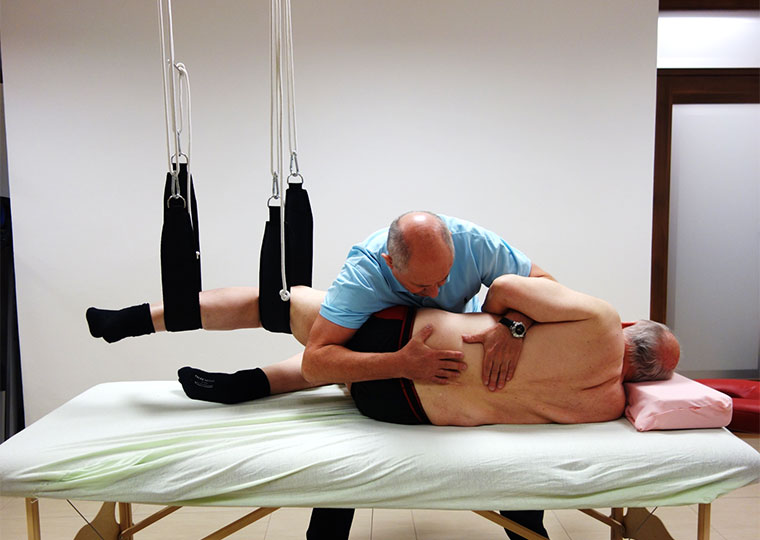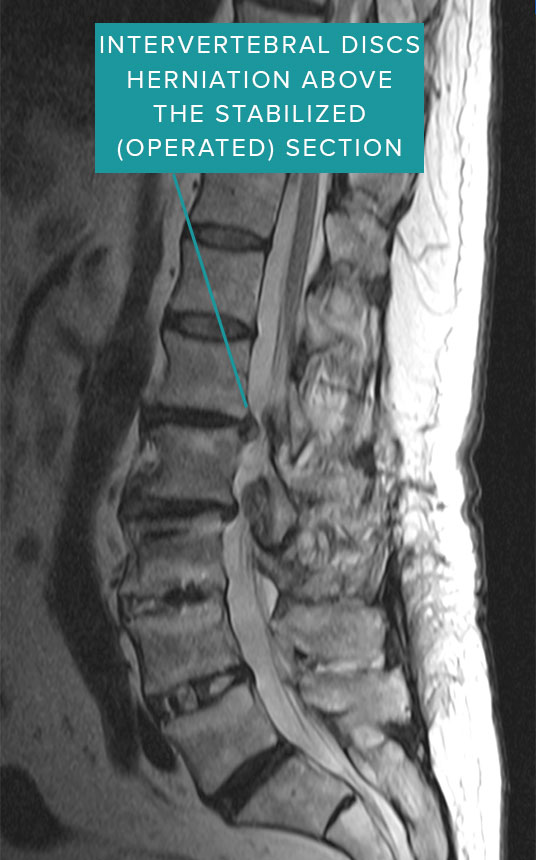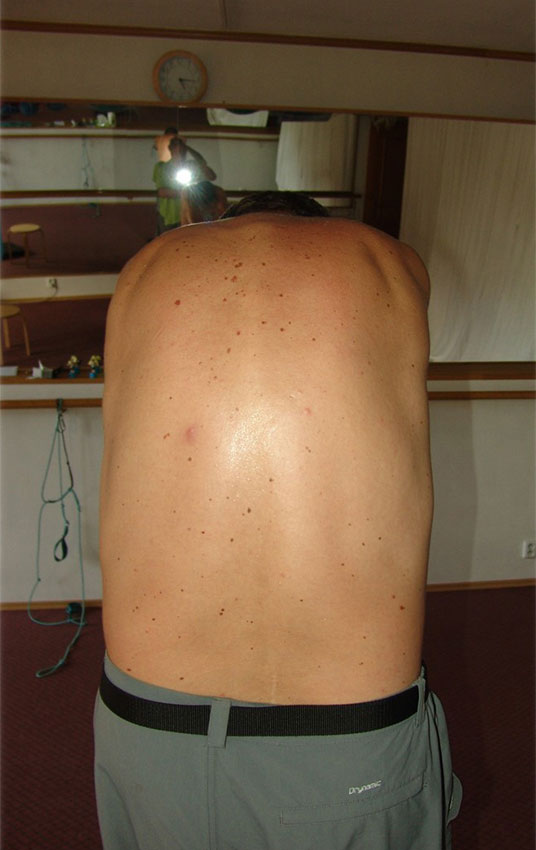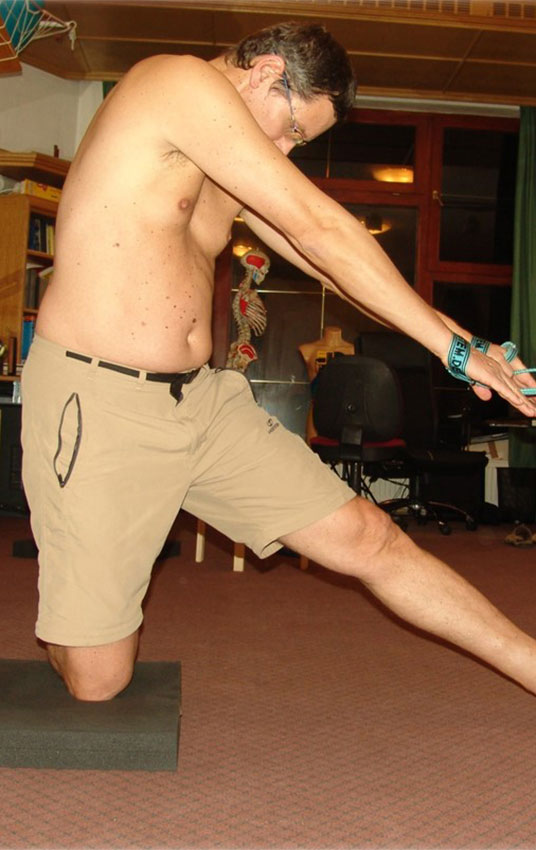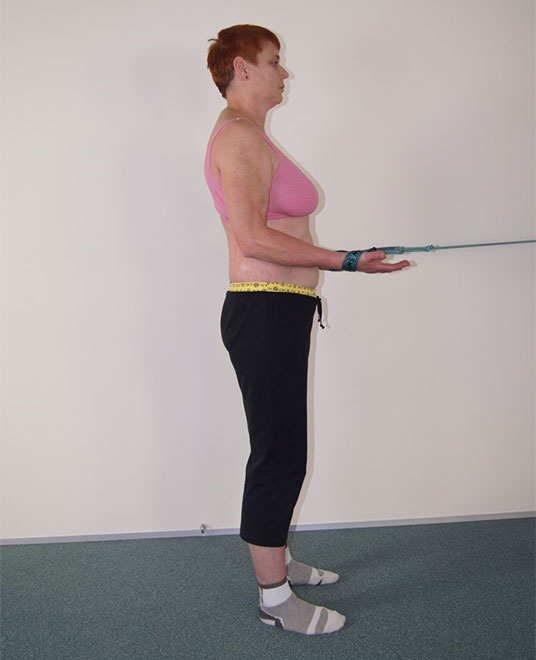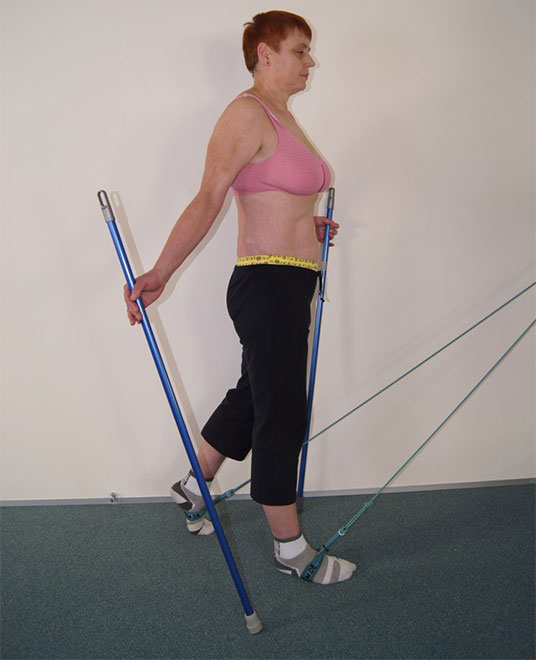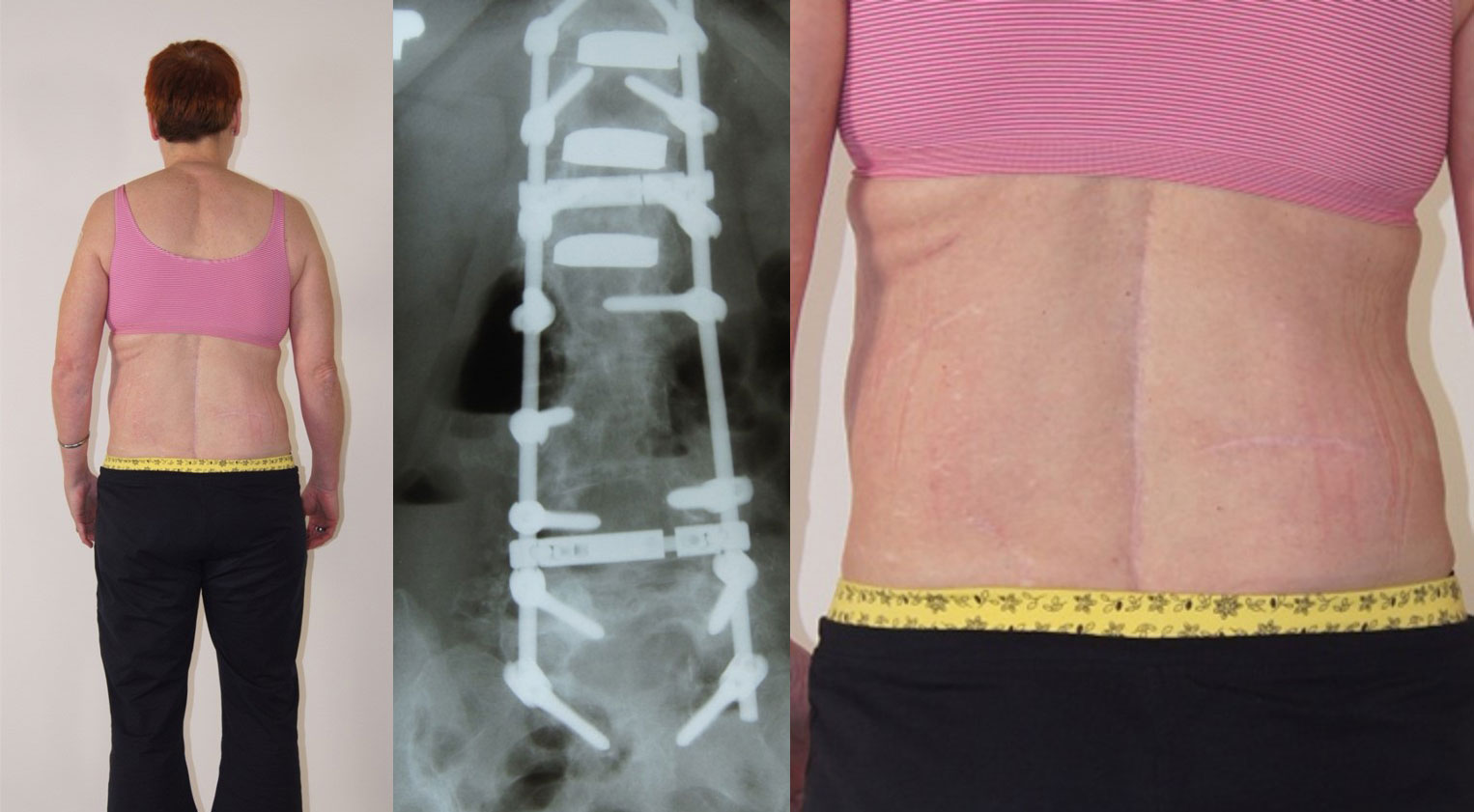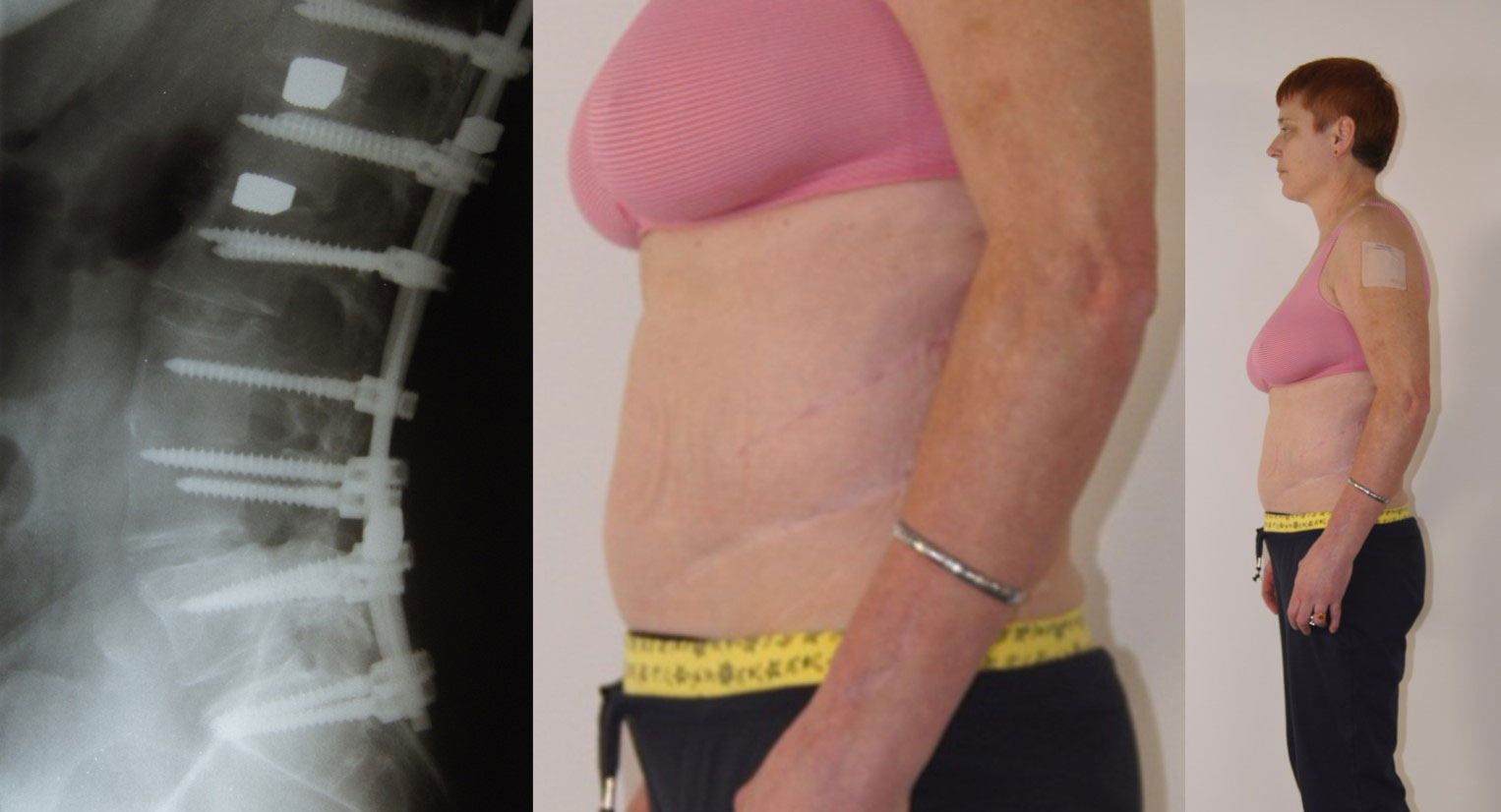FAILED BACK SURGERY SYNDROME
(POST-OP COMPLICATIONS)
Patient
The patients shown below had undergone back surgery yet they still suffered from pain and further complications after surgery.
The surgery doesn’t eliminate muscle tension in the front of the spine (iliopsoas, hip flexor) or the back of the spine (erector spinae). This muscle tension causes spinal compression, compression of the intervertebral discs and therefore pain. Complications often happen within the overstressed segments above (or below) the segment that was operated on.
We stretch the above muscles to reduce tightness and strengthen muscle weakness within the abdominal wall to create spinal traction and decompression. All of the illustrated patients’ condition improved after our treatment.
The Spiral Stabilization method prevents occurrence of further spine degeneration following surgery.
Before & After MRI Scan
Patient 4
This patient underwent 16 surgeries. Her condition improved thanks to Spiral Stabilization exercise programme.
Thank you to the Spiral Stabilization rehabilitation clinic in Prague (spiralstabilization.com) for the provision of all of the patient images on this page.








